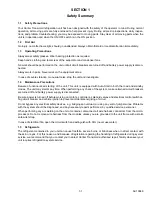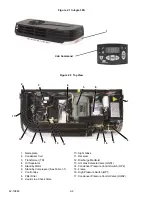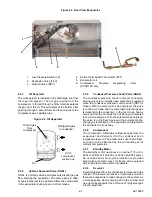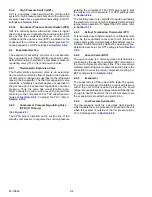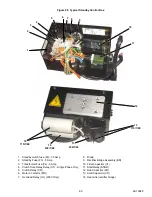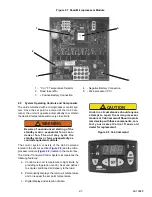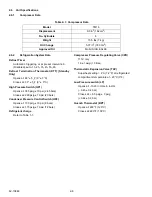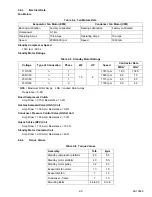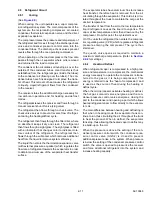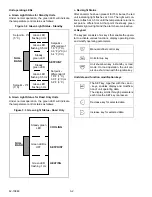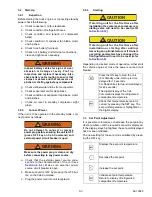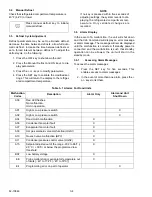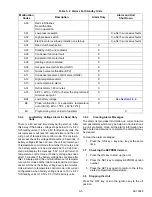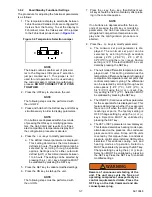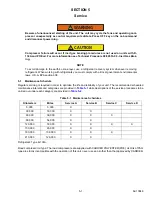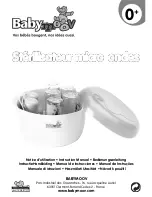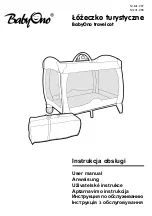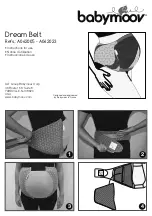
2-11
62-10848
2.8
Refrigerant Circuit
2.8.1
Cooling
(See
When cooling, the unit operates as a vapor compres-
sion refrigeration system. The main components of the
system are the reciprocating compressor, air-cooled
condenser, thermostatic expansion valve and the direct
expansion evaporator.
The compressor raises the pressure and temperature of
the refrigerant and forces it through the discharge check
valve and condenser pressure control valve into the
condenser tubes. The discharge check valves prevent
reverse flow through the non operating compressor.
When operating on the road compressor, the flow also
passes through the oil separator where oil is removed
and returned to the road compressor.
The condenser fan circulates surrounding air over the
outside of the condenser tubes. Heat transfer is thus
established from the refrigerant gas (inside the tubes)
to the condenser air (flowing over the tubes). The con-
denser tubes have fins designed to improve the trans-
fer of heat. This removal of heat causes the refrigerant
to liquefy. Liquid refrigerant flows from the condenser
to the receiver.
The receiver stores the additional charge necessary for
low ambient operation and for heating and defrost
modes.
The refrigerant leaves the receiver and flows through a
manual receiver shut-off valve (king valve).
The refrigerant then flows through a check valve. The
check valve serves to prevent reverse flow of refriger-
ant during the heating/defrost cycle.
The refrigerant then flows through the filter drier, where
an absorbent keeps it dry and clean. The refrigerant
then flows though a sight glass. The sight glass is fitted
with an indicator that changes color to indicate mois-
ture content of the refrigerant. The refrigerant then
flows through the subcooler which removes additional
heat from the liquid to improve system efficiency.
The liquid than enters the thermostatic expansion valve
(with external pressure equalizer) which regulates the
flow rate of refrigerant towards the evaporator in order
to obtain maximum use of the evaporator heat transfer
surface.
The evaporator tubes have aluminum fins to increase
heat transfer; therefore heat is removed from the air
circulating through the evaporator. This cold air is circu-
lated throughout the truck to maintain the cargo at the
desired temperature.
The transfer of heat from the air to the low temperature
liquid refrigerant causes the liquid to vaporize. The
vapor at low temperature and is then drawn out by the
compressor. From this point, the cycle starts over.
On 115v units the refrigerant then enters the compres-
sor regulating valve (CPR) which regulates refrigerant
pressure entering the compressor. The cycle then
starts over.
The quench valve opens as required to maintain a
maximum discharge temperature. (Refer to
for settings.)
2.8.2
Heat And Defrost
When refrigerant vapor is compressed to a high pres-
sure and temperature in a compressor, the mechanical
energy necessary to operate the compressor is trans-
ferred to the gas as it is being compressed. This
energy is referred to as the “heat of compression” and
is used as the source of heat during the heating or
defrost cycle.
When the microprocessor activates heating or defrost,
the hot gas solenoid valve energizes and the con-
denser pressure control valve energizes, closing the
port to the condenser and opening a port which allows
heated refrigerant vapor to flow directly to the evapora-
tor coil.
The main difference between heating and defrosting is
that when in heating mode the evaporator fans con-
tinue to run thus circulating the air throughout the truck
to heat the product. When in defrost, the evaporator
fans stop, thus allowing the heated vapor to defrost any
ice build-up on the coil.
When the pressure is above the setting of the con-
denser pressure control switch, the condenser pres-
sure control valve (HGS2) is closed to prevent
additional pressure rise in the system. When pressure
is below the setting of the condenser pressure control
switch, the valve is opened to pressurize the receiver
and force additional refrigerant into the system and
increase heating capacity.

